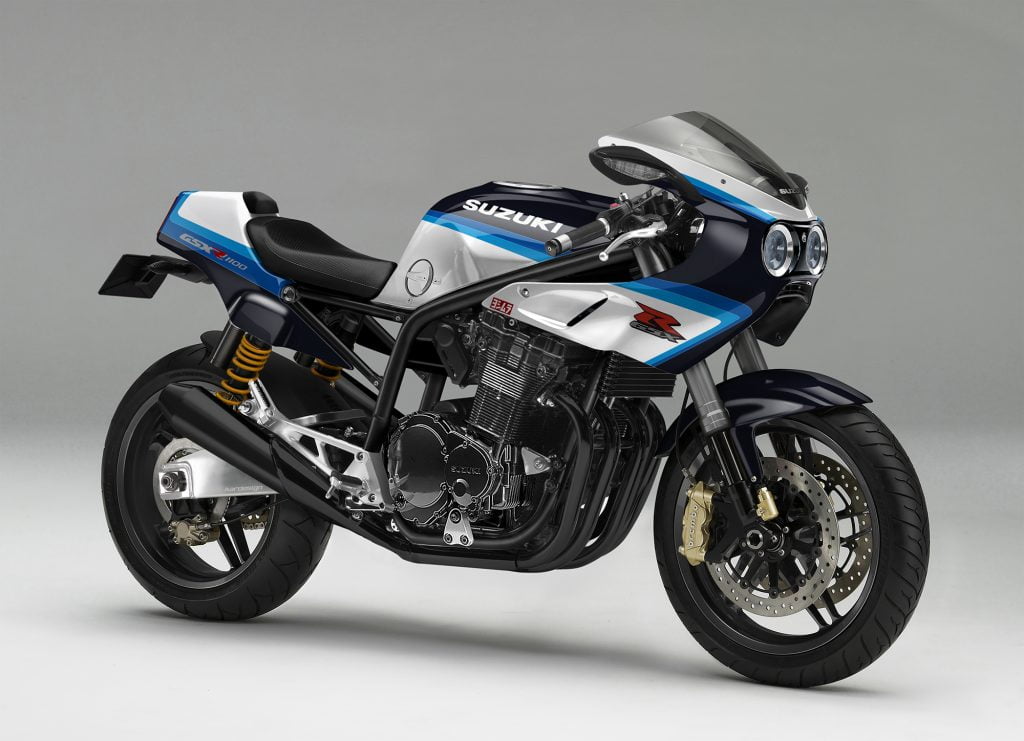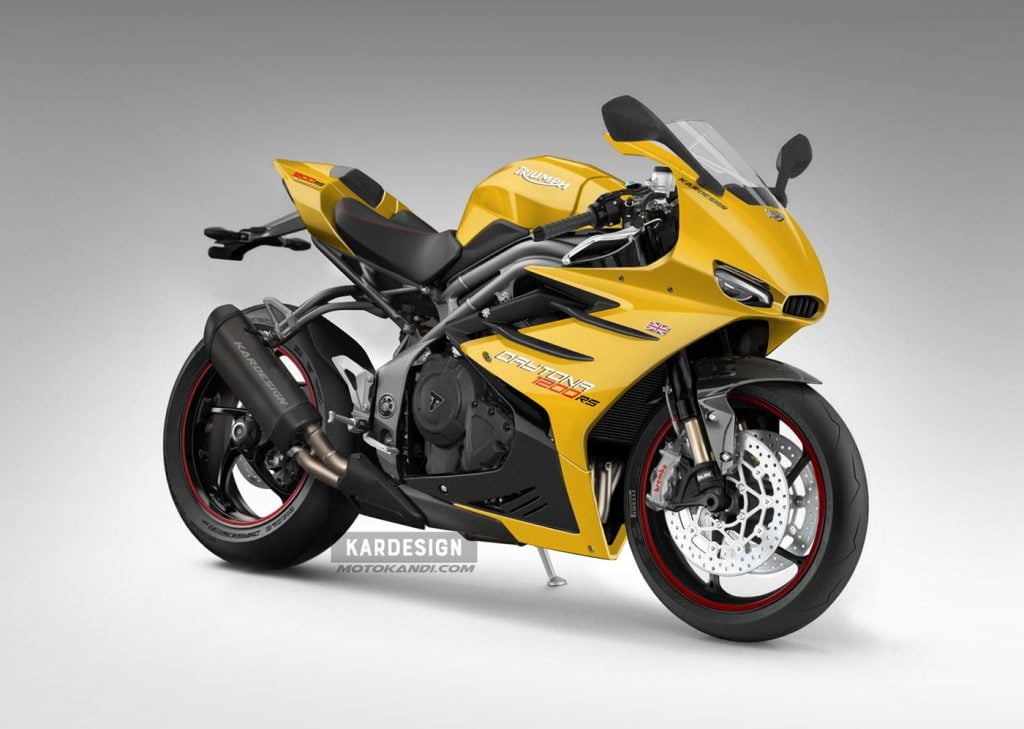
Never mind the split on Brexit in the UK, or the maskers v anti-maskers around the world, there’s now a fresh way to argue with your neighbour, and that’s whether you prefer hi-level exhausts to traditional side exit low exhausts. We were reinded of this classic debate when we featured a Kardesign concept render of a Daytona 1200RS last week that used the hi-level cans from last year’s Speed Triple. It wasn’t a difficult decision to make; it just looked better… but as we all know, looks are subjective.

Side view of the 2020 Speed Triple with its high-level exhaust 
The 2021 Speed Triple 1200 RS has a single silencer exiting low o the right-hand side
Even Triumph can’t decide: The original Speed Triple in 1994 had a 3-2 exhaust system with silencers situated in the traditional place alongside the back wheel, and that’s where they stayed through to the next T509 model. By the time the 955i variant arrived in 1997, the twin silencers had been replaced by a weight-saving single outlet on the right-hand side. This model also featured a single-sided swingarm that gave the illusion of a ‘floating’ rear wheel, though it was partially obscured by the large silencer, hiding a ot of those aesthetic gains.
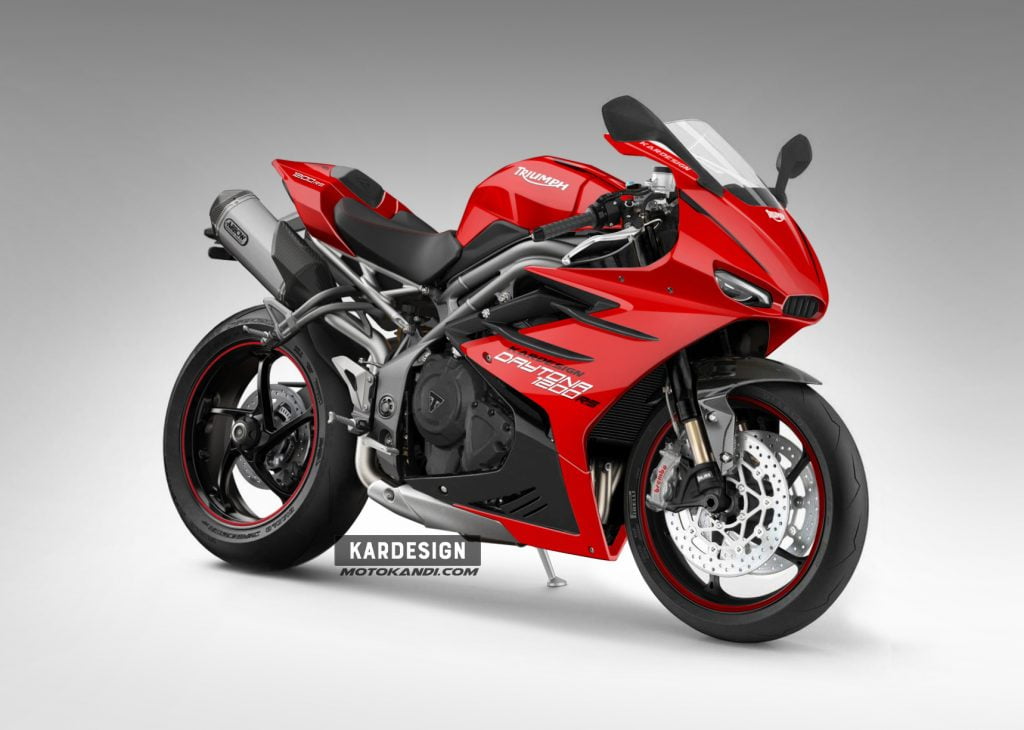
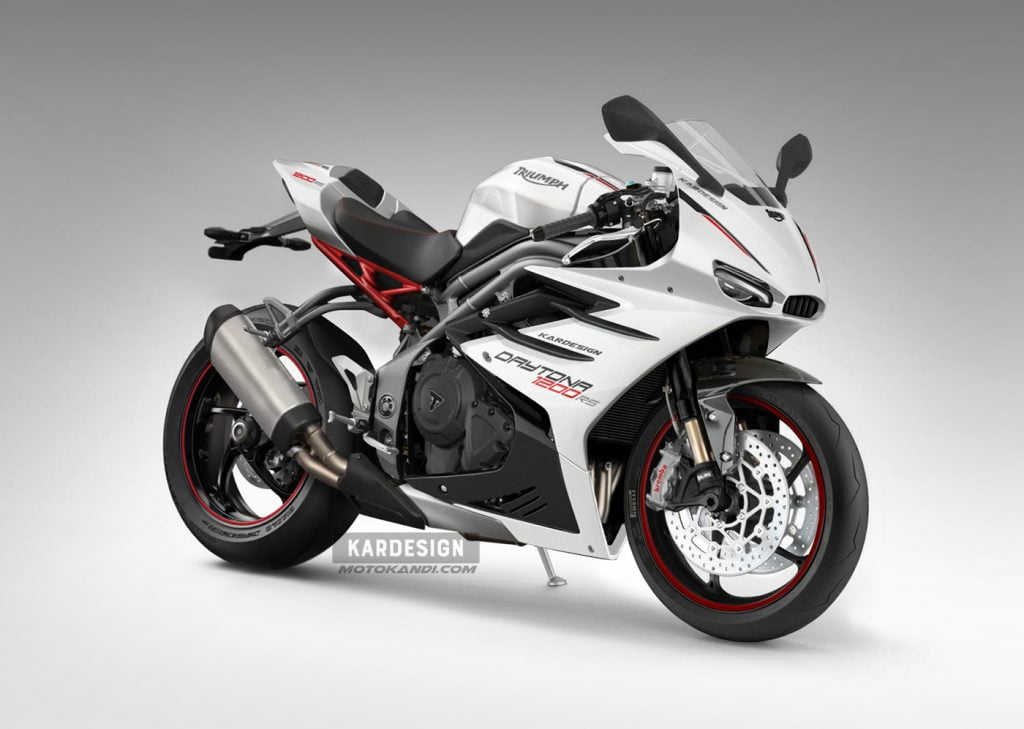
Kardesign 2021 Daytona 1200RS low exhaust 
Kardesign 2021 Daytona 1200RS high exhaust
Triumph made amends for that with the arrival of the 1050cc model in 2005. The 1050 had not one, but two hi-level cans that sat neatly either side – and just below – the tail unit. If there was a performance price to pay for those exhaust gasses having a mildy tortuous route to escape into the ether, it was worth paying: the 1050 was a beauty, not just for it’s aggressive and distinctive evolution in bodywork styling, but those cans lifted high to display the back wheel in full.
And that’s how they stayed for sixteen years, until last week. Until the arrival of the long-awaited 1200 RS Speed Triple update. Not only had the engine size been increased to 1160cc, but weight had been reduced by 20lbs, and the promise of superbike handling to match the superbike power claims of 178bhp. The single silencer – again placed like the it was in the original 1994 model – looks like it belongs on a Honda Fireblade. Triumph say they’ve done this to improve performance, notably in the handling department, by having the mass more central to help the bike turn.
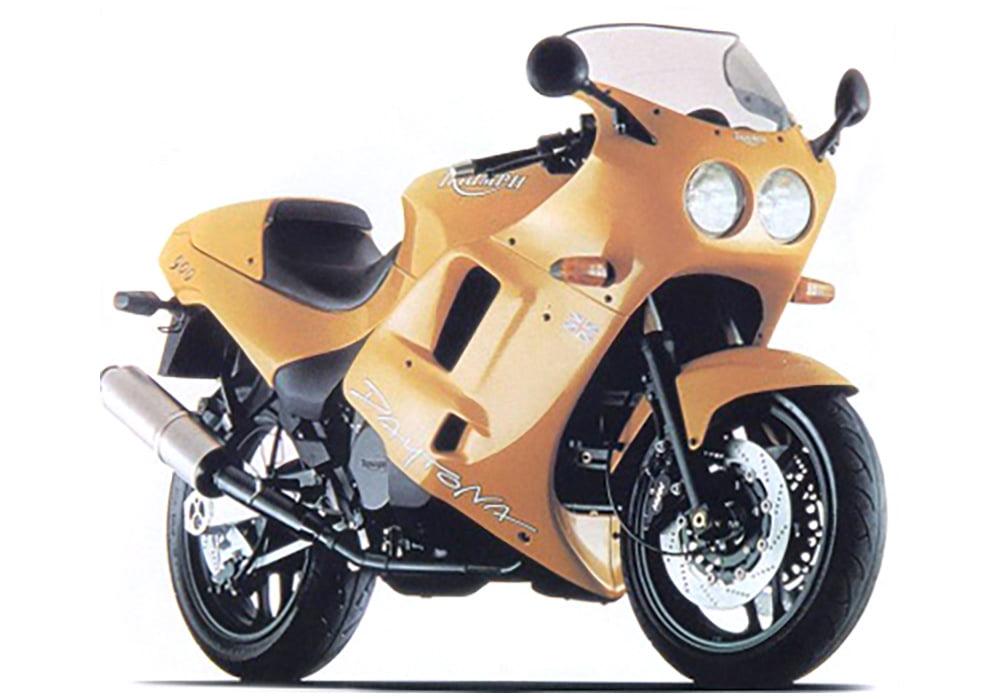
1993 Triumph Daytona Super III 
Kardesign 2021 Triumph Daytona 1200RS Super III concept with low exhaust
This might well be the case but riders have been divided over the move. After 15 years of twin hi-level cans, the Speed Triple loses one of its strongest characteristics.
So forget about those traditional struggles of Good vs Evil, Red vs Blue, East vs West, where do you stand on the high vs low exhausts debate?




